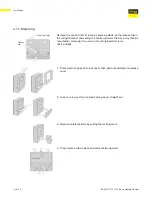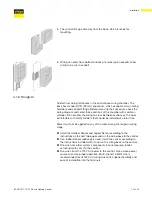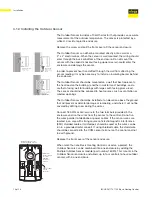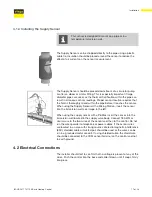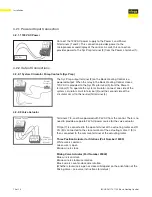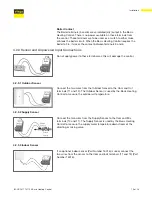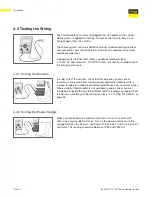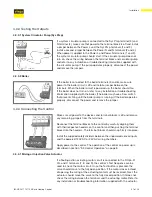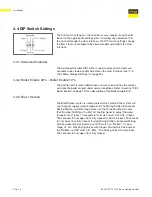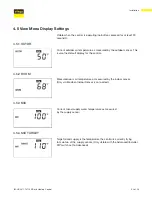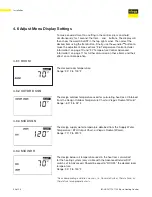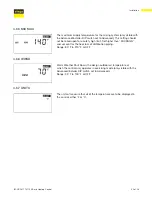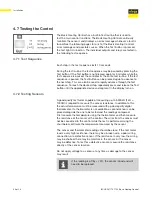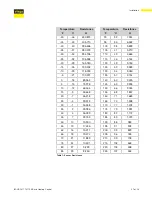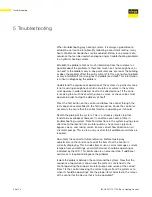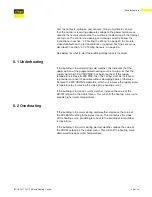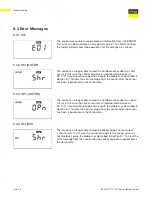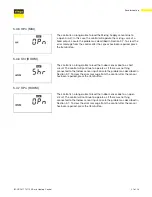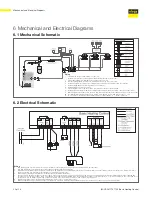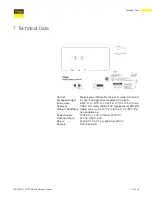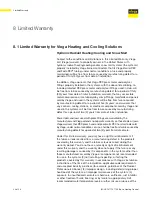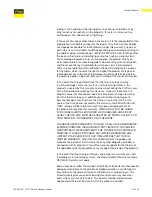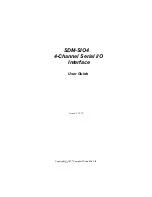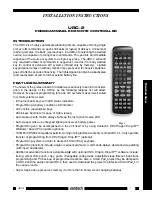
Installation
26 of 36
IM-HC 561174 1120 Basic Heating Control
4.7 Testing the Control
The Basic Heating Control has a built-in test routine that is used to
test the main control functions. The Basic Heating Control continually
monitors the sensors and displays an error message whenever a fault is
found. See the following pages for a list of the Basic Heating Control’s
error messages and possible causes. When the Test button is pressed,
the test light is turned on. The individual outputs and relays are tested in
the following test sequence.
4.7.1 Test Sequence
Each step in the test sequence lasts 10 seconds.
During the test routine, the test sequence may be paused by pressing the
Test button. If the Test button is not pressed again for 5 minutes while the
test sequence is paused, the control exits the entire test routine. If the test
sequence is paused, the Test button can be pressed again to advance to
the next step. This can also be used to rapidly advance through the test
sequence. To reach the desired step, repeatedly press and release the Test
button until the appropriate device and segment in the display turn on.
4.7.2 Testing Sensors
A good quality test meter capable of measuring up to 5,000kΩ (1kΩ =
1000Ω) is required to measure the sensor resistance. In addition to this,
the actual temperature must be measured with a good quality digital
thermometer. If a thermometer is not available, a second sensor can be
placed alongside the one to be tested and the readings compared.
First measure the temperature using the thermometer and then measure
the resistance of the sensor at the control. The wires from the sensor must
not be connected to the control while the test is performed. Using the
chart below, estimate the temperature measured by the sensor.
The sensor and thermometer readings should be close. If the test meter
reads a very high resistance, there may be a broken wire, a poor wiring
connection, or a defective sensor. If the resistance is very low, the wiring
may be shorted, there may be moisture in the sensor, or the sensor
may be defective. To test for a defective sensor, measure the resistance
directly at the sensor location.
Do not apply voltage to a sensor at any time as damage to the sensor
may result.
If the reading is off by +/- 5% the sensor is bad and will
need to be replaced.
Summary of Contents for IM-HC 561174 1120
Page 1: ...Installation Manual Viega Basic Heating Control ...
Page 2: ......



